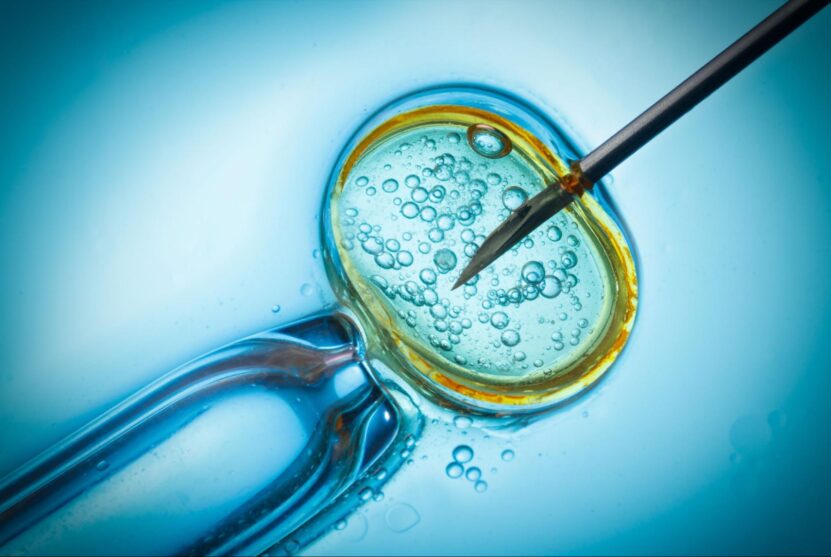November 30, 2024
The Egg Retrieval Process

Egg retrieval, or oocyte retrieval, is a pivotal procedure in assisted reproductive technologies (ART), particularly in vitro fertilization (IVF). This process involves collecting mature eggs from the ovaries, which can then be fertilized with sperm to create embryos. For many individuals and couples, understanding the egg retrieval process can alleviate concerns and foster a sense of empowerment throughout their fertility journey.
In this blog, we will explore the egg retrieval process in detail, including preparation, the procedure itself, recovery, potential risks, and what to expect afterward. Whether you are considering IVF or are already on your journey, this blog will provide valuable insights to help you navigate the process with confidence.
Understanding the Egg Retrieval Process
Before delving into the specifics of the egg retrieval process, it is essential to understand its role in the broader context of fertility treatment. Egg retrieval is typically performed as part of an IVF cycle, where several steps occur prior to the actual procedure:
- Ovarian Stimulation: To maximize the number of eggs retrieved, fertility medications are prescribed to stimulate the ovaries. This phase usually lasts about 10 to 14 days.
- Monitoring: A few ultrasounds and blood tests are conducted during this time to monitor the development of follicles (fluid-filled sacs that contain the eggs) and hormone levels.
- Trigger Shot: Once the follicles have matured, a trigger shot or shots are administered. This injection helps the eggs reach maturity and prepares them for retrieval.
Preparing for Egg Retrieval
Preparation for egg retrieval involves several important steps, both physically and mentally. Here’s what to expect:
1. Initial Consultation
Before beginning the IVF cycle, you will have an initial consultation with a fertility specialist. This appointment will include a thorough medical history review, physical examination, and discussions about your fertility goals and any concerns you may have.
2. Ovarian Reserve Testing
To assess your fertility potential, your doctor may recommend ovarian reserve testing. This typically involves:
- Hormone Blood Tests: Tests like the Follicle-Stimulating Hormone (FSH) test, Luteinizing Hormone (LH) test, and Anti-Müllerian Hormone (AMH) test help evaluate your hormone levels and ovarian function.
- Ultrasound: A transvaginal ultrasound may be performed to visualize the ovaries and assess the number of follicles.
3. Medication Protocol
Once you are cleared to proceed, your doctor will prescribe fertility medications to stimulate your ovaries. This may include:
- Follicle-Stimulating Hormone (FSH): Encourages the growth of multiple follicles.
- Luteinizing Hormone (LH): Collaborates with Follicle-Stimulating Hormone (FSH) to facilitate the development of ovarian follicles.
- GnRH Agonists/Antagonists: These medications help control hormone levels to prevent premature ovulation.
Your doctor will provide specific instructions on how to administer the medications, including dosage and timing.
Ovarian Stimulation
The ovarian stimulation phase is critical for maximizing the number of eggs retrieved. Here’s what happens during this stage:
1. Daily Injections
You will need to self-administer daily hormone injections for about 10 days. Your healthcare provider will guide you on the proper technique to ensure effective administration.
2. Monitoring Appointments
Throughout the stimulation phase, you will have several monitoring appointments. These typically involve:
- Transvaginal Ultrasounds: Used to visualize the ovaries and measure follicle size.
- Blood Tests: Hormone levels will be checked to assess how your body is responding to the medication.
These appointments are crucial for adjusting medication dosages and determining the optimal time for egg retrieval.
Triggering Ovulation
Once your follicles reach the desired size and hormone levels indicate readiness, your doctor will administer a trigger shot of hCG and often a 2nd shot called lupron. These trigger the final maturation of the eggs and prepare them for retrieval. Here’s what to know:
1. Timing is Key
The trigger shot is usually given 34 to 36 hours before the scheduled egg retrieval. It is essential to follow your doctor’s instructions precisely to ensure the best possible outcome.
2. Preparing for the Procedure
After the trigger shot, you may receive specific instructions regarding dietary restrictions and medication adjustments leading up to the retrieval.
The Egg Retrieval Procedure
Egg retrieval is typically a 10 minute outpatient procedure, meaning you can go home about an hour later. Here’s a breakdown of what to expect during the procedure:
1. Arrival and Preparation
On the day of your egg retrieval, you will arrive at the fertility clinic or hospital. Here’s what happens:
- IV Access: An intravenous (IV) line will be placed in your arm for sedation and medication administration.
- Monitoring: Your vital signs will be monitored, and you will have the opportunity to ask any last-minute questions.
2. Sedation
Most women receive sedation – to minimize discomfort. You remain awake but relaxed and drowsy
3. The Retrieval Process
The egg retrieval procedure typically lasts about 10 minutes. Here’s how it unfolds:
- Ultrasound-Guided Follicle Aspiration: Using transvaginal ultrasound for precise visualization, a slender needle is carefully inserted through the vaginal wall to access and retrieve the contents of each ovarian follicle.
Aspiration: The needle is used to aspirate (suction out) the fluid from each follicle, which contains the eggs. - Collection of Eggs: The retrieved fluid is handed off to the embryologist, who will identify and collect the eggs.
4. Post-Procedure Monitoring
After the egg retrieval, you will be moved to a recovery area where your vital signs will be monitored. This typically lasts for about 30 minutes to an hour.
What to Expect After Egg Retrieval
Post-retrieval, it’s essential to understand what to expect regarding your recovery and potential side effects.
1. Immediate Aftermath
Once you are in recovery, the healthcare team will monitor you for any complications. Here are some common experiences:
- Mild Cramping: It is normal to experience mild cramping and discomfort after the procedure, similar to menstrual cramps.
- Bloating: Some women may feel bloated due to the hormonal changes and fluid retention.
2. Discharge Instructions
Before leaving the clinic, you will receive discharge instructions, which may include:
- Rest: Plan to take the rest of the day off to rest and recuperate.
- Hydration: Drink plenty of fluids to stay hydrated.
- Pain Management: Over-the-counter pain relievers may be recommended if you experience discomfort.
Risks and Complications
While egg retrieval is generally safe, there are potential risks and complications to be aware of:
1. Ovarian Hyperstimulation Syndrome (OHSS)
OHSS is a condition that can occur when the ovaries respond excessively to fertility medications. Symptoms may include:
- Severe abdominal pain
- Nausea and vomiting
- Rapid weight gain
- Shortness of breath
If you experience any of these symptoms, contact your healthcare provider immediately.
2. Bleeding or Infection
As with any surgical procedure, there is a risk of bleeding or infection at the retrieval site. Signs to watch for include:
- Excessive vaginal bleeding
- Fever
- Foul-smelling discharge
3. Anesthesia Risks
Although rare, there are risks associated with anesthesia. Discuss any concerns with your healthcare provider prior to the procedure.
Emotional Considerations
The egg retrieval process can evoke a range of emotions, from excitement to anxiety. Here are some emotional considerations to keep in mind:
1. Preparing Mentally
It’s normal to feel a mix of emotions leading up to the egg retrieval. Consider:
- Positive Visualization: Envisioning a successful outcome can help alleviate anxiety.
- Mindfulness Techniques: Practices like meditation or deep breathing can reduce stress.
2. Communicating with Your Partner
If you have a partner, open communication about feelings and expectations is essential. Discuss your hopes and fears, and support each other throughout the process.
3. Seeking Support
Don’t hesitate to reach out for support, whether from friends, family, or support groups. Sharing your experience can help ease emotional burdens.
Long-Term Considerations After Egg Retrieval
After the egg retrieval process, there are important long-term considerations to keep in mind as you navigate your fertility journey:
1. Fertilization of Eggs
Once the eggs are retrieved, the next step is fertilization. Here’s what happens:
- Insemination: The retrieved eggs are mixed with sperm in a laboratory setting. This can be done through traditional insemination or Intracytoplasmic Sperm Injection (ICSI), where a single sperm is injected directly into an egg.
- Embryo Development: After fertilization, the embryos are monitored for growth and development. The embryologist will assess which embryos are viable for transfer or freezing.
2. Embryo Transfer
Depending on your treatment plan, you may proceed with an embryo transfer, where one or more embryos are placed into the uterus. This is typically done about three to five days after egg retrieval, depending on the developmental stage of the embryos. Here’s a breakdown of the embryo transfer process:
- Timing: The timing of the transfer is crucial and is based on the growth and quality of the embryos. If you have a blastocyst (an embryo that has developed for five to six days), it may be transferred at that stage for optimal implantation chances.
- Preparation: Before the transfer, your doctor may perform an ultrasound to assess the thickness of the uterine lining and ensure that it is suitable for implantation. You may also receive medications, such as progesterone, to prepare your uterus for the embryo.
- The Transfer Procedure: The embryo transfer is a relatively simple and quick procedure, usually taking about 15 to 20 minutes. Here’s what to expect:
- You will lie on an examination table, similar to a gynecological exam.
- A thin catheter is used to gently place the embryo(s) into the uterus.
- The procedure is usually painless, although you may experience mild discomfort.
- Post-Transfer Care: After the transfer, you may be advised to rest for a short period in the clinic before heading home. While many women return to normal activities shortly after, it’s advisable to avoid strenuous exercise and heavy lifting for a few days.
- Waiting Period: Following the embryo transfer, you will enter the “two-week wait,” a period filled with anticipation as you await the results of a pregnancy test. During this time, continue taking any prescribed medications and follow your doctor’s recommendations.
Embryo transfer is a hopeful step in the IVF journey, bringing you closer to your dream of parenthood. It’s essential to remain optimistic and take care of your emotional and physical well-being during this waiting period.


